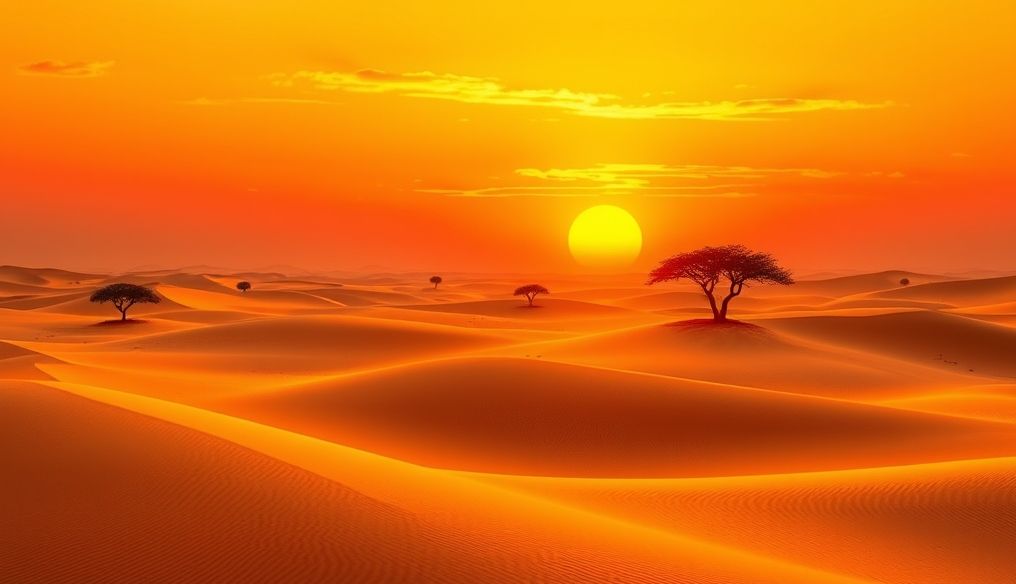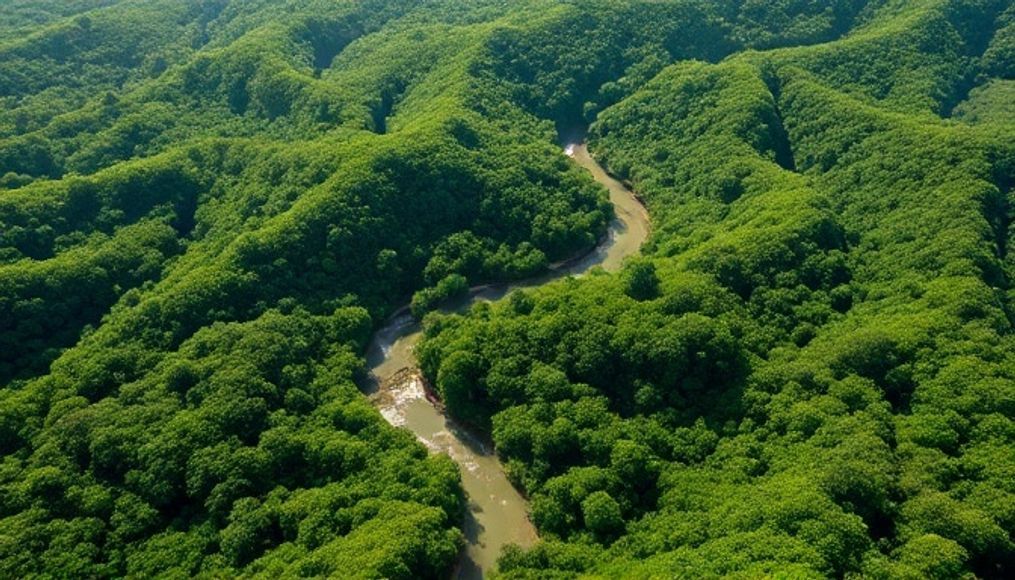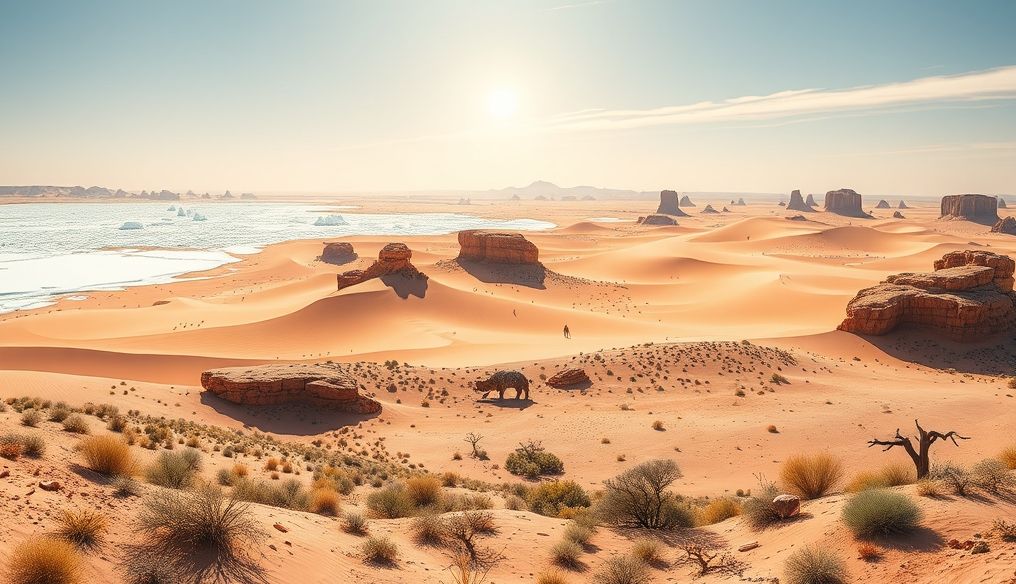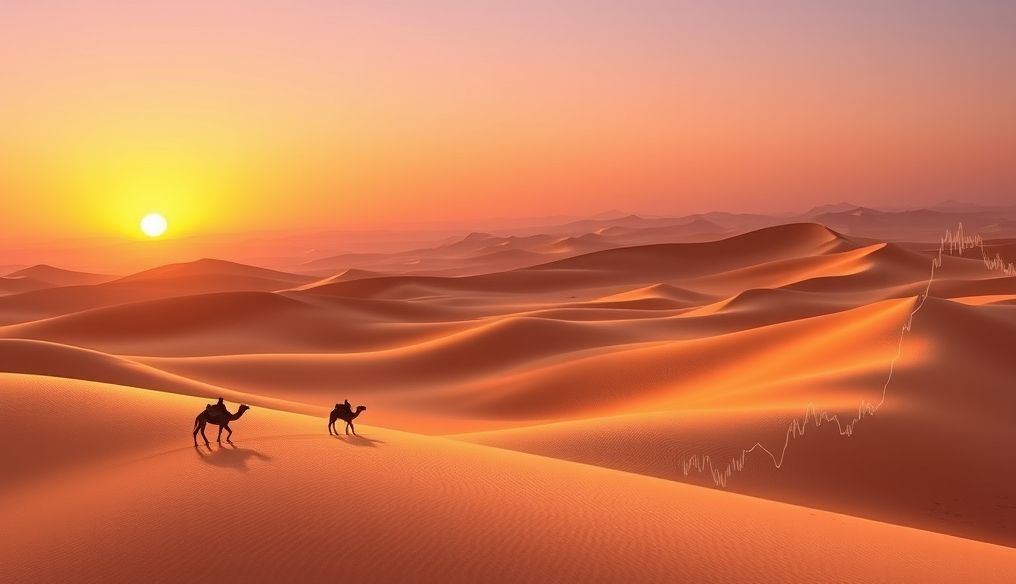What are the largest deserts in the world and what distinguishes them?
Deserts cover approximately one-third of the Earth's surface and are characterized by harsh climatic conditions and a scarcity of water. However, these arid regions are home to unique biodiversity and stunning geological formations. In this article, we will explore the largest deserts in the world, learning about their distinctive characteristics and the challenges of life within them.
1. Sahara Desert: The Queen of Deserts
The Sahara Desert is the largest hot desert in the world, spanning across North Africa and covering an area of approximately 9.2 million square kilometers. It is characterized by diverse terrain, including vast sand dunes, rocky plains, and rugged mountains.
- Climate: Hot and dry, with significant temperature variations between day and night.
- Flora and Fauna: Plants and animals are adapted to harsh conditions, including plants such as cacti and thorny trees, and animals such as camels, snakes, and scorpions.
- Challenges: Water scarcity, sandstorms, and high temperatures.
2. Antarctic Polar Desert: The Vast Frozen Continent
Although covered in ice, the Antarctic Polar Desert is considered the largest desert in the world due to its lack of precipitation. It covers an area of over 14 million square kilometers.
- Climate: Cold and dry, with freezing temperatures year-round.
- Flora and Fauna: Life is limited to mosses, fungi, and some marine animals such as penguins and seals.
- Challenges: Extreme cold, blizzards, and isolation.
3. Arabian Desert: Sands of the Arabian Peninsula
The Arabian Desert stretches across most of the Arabian Peninsula, covering an area of approximately 2.3 million square kilometers. It is characterized by vast sand dunes and gravel plains.
- Climate: Hot and dry, with a long summer and a short, mild winter.
- Flora and Fauna: Drought-adapted plants such as tamarisk and jujube trees, and animals such as camels, wolves, and foxes.
- Challenges: Water scarcity, sandstorms, and high temperatures.
4. Gobi Desert: Between China and Mongolia
The Gobi Desert is located between northern China and southern Mongolia, covering an area of approximately 1.3 million square kilometers. It is characterized by diverse terrain, including sandy and rocky deserts and mountains.
- Climate: Cold and dry, with significant temperature variations between summer and winter.
- Flora and Fauna: Plants and animals are adapted to harsh conditions, including plants such as sagebrush and grasses, and animals such as Bactrian camels and gazelles.
- Challenges: Extreme cold, drought, and sandstorms.
5. Kalahari Desert: Jewel of Southern Africa
The Kalahari Desert is located in southern Africa, spanning across Botswana, Namibia, and South Africa, covering an area of approximately 900,000 square kilometers. It is characterized by red sand dunes and grassy plains.
- Climate: Semi-arid, with a hot summer and a mild winter.
- Flora and Fauna: Diverse plants and animals, including plants such as acacia trees and grasses, and animals such as lions, cheetahs, and giraffes.
- Challenges: Water scarcity, drought, and desertification.
6. Patagonian Desert: Splendor of Argentina
The Patagonian Desert is located in Argentina, covering an area of approximately 673,000 square kilometers. It is characterized by diverse terrain, including rocky plains and plateaus.
- Climate: Cold and dry, with strong winds.
- Flora and Fauna: Plants and animals are adapted to harsh conditions, including plants such as shrubs and grasses, and animals such as guanacos and hares.
- Challenges: Extreme cold, drought, and strong winds.
7. Great Australian Desert: The Beating Heart of Australia
The Great Australian Desert covers a large part of Australia, spanning across several states, and covering an area of approximately 400,000 square kilometers. It consists of several sub-deserts such as the Great Victoria Desert and the Gibson Desert.
- Climate: Hot and dry, with significant temperature variations between day and night.
- Flora and Fauna: Drought-adapted plants and animals, including plants such as eucalyptus trees and grasses, and animals such as kangaroos and wallabies.
- Challenges: Water scarcity, high temperatures, and sandstorms.
8. Syrian Desert: Extension of the Arabian Desert
The Syrian Desert covers part of Syria, Jordan, Iraq, and Saudi Arabia, and is an extension of the Arabian Desert. It is characterized by rocky and gravelly terrain.
- Climate: Hot and dry, with significant temperature variations between day and night.
- Flora and Fauna: Drought-adapted plants and animals, including plants such as shrubs and grasses, and animals such as foxes and lizards.
- Challenges: Water scarcity, high temperatures, and sandstorms.
9. Chihuahuan Desert: Between Mexico and the United States
The Chihuahuan Desert is located between Mexico and the United States, covering an area of approximately 362,000 square kilometers. It is characterized by diverse terrain, including mountains and plateaus.
- Climate: Semi-arid, with a hot summer and a mild winter.
- Flora and Fauna: Diverse plants and animals, including plants such as cacti and agave, and animals such as jackrabbits and snakes.
- Challenges: Water scarcity, drought, and desertification.
10. Karakum Desert: Sands of Turkmenistan
The Karakum Desert is located in Turkmenistan, covering an area of approximately 350,000 square kilometers. It is characterized by vast sand dunes and gravel plains.
- Climate: Hot and dry, with significant temperature variations between summer and winter.
- Flora and Fauna: Drought-adapted plants and animals, including plants such as saxaul and grasses, and animals such as gazelles and lizards.
- Challenges: Water scarcity, drought, and sandstorms.
Conclusion
Deserts are unique regions on our planet, characterized by their diverse terrain and the challenges of life within them. Despite the harsh conditions, these regions are home to amazing biodiversity and unique geological formations that deserve exploration and appreciation.




